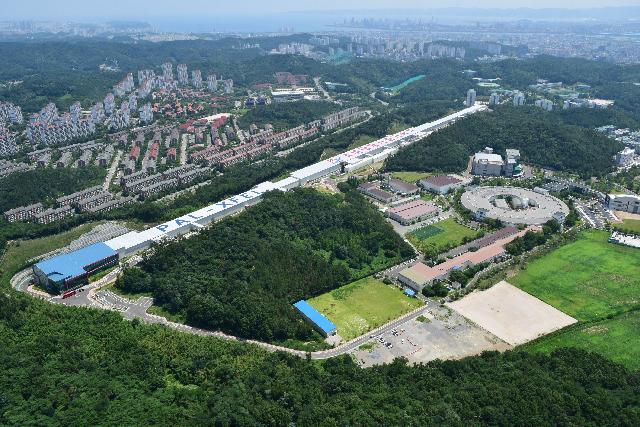
Of all the experimental equipment in POSTECH, the accelerators are arguably the most important asset. To use the accelerators, scientists throughout the world visit POSTECH, and collaborate research with our professors. Since there are only three fourth-generation accelerators throughout the world, having one of them inside the campus is a tremendous advantage.
The accelerator is a valuable piece of equipment that accelerates minute particles like atom nuclei, to collide the accelerated particle with a sample. Through the collision, humanity can peer into the microstructure of a specimen. Accelerators are classified by the type of particle that is accelerated, and the accelerators in POSTECH feature electrons. Ever since they were installed, the accelerators contributed greatly to science, revealing structures to help scientists’ comprehension of nature.
In 1988, the Pohang Accelerator Laboratory (PAL) was established. The first accelerator, Pohang Light Source (PLS-I), was constructed in 1994. After 18 years of usage, the PLS-I was upgraded to PLS-II, while PAL started a new project, the PAL-XFEL. PLS-II is a third-generation accelerator, while PAL-XFEL is a fourth-generation accelerator, ten billion times brighter than PLS-II.
For PLS-I, about 60 billion KRW was paid by the government, while 90 billion KRW was paid by POSCO. For PAL-XFEL, 430 billion KRW was paid by the government, while 26 billion was paid from the local government. Also, from 2013, the government bore the entire working expenses. In this situation, the National Assembly pointed out that even though the accelerator is beneficial to the nation, it is not right for a nation to support a private university to this extent. Also, since PLS was private property, it was excluded from the National Assembly’s management evaluation, information disclosure, and inspection, even though it was operated with the government’s money. So, for the publicness, transparency, and efficiency of the maintenance and operation of the accelerators, POSTECH and the Korean government has agreed to nationalize PLS from 2017.
After the nationalization of PLS, the Ministry of Science and ICT announced that they will consign the operation and management of PLS to appropriate applicants. POSTECH and KIST (Korea Institute of Science and Technology) applied for the role, but considering that POSTECH has successfully operated PLS for the last 20 years, the government gave POSTECH the priority.
After negotiations with the government, on Dec. 20, POSTECH retrieved the operation right to PLS after it was nationalized. POSTECH manages PLS for five years, from January 2018 to December 2022. However, if the results of management evaluation are unsatisfactory, POSTECH can lose its right earlier.
POSTECH plans to upgrade their management system. First, the irregular workers will be turned into regular workers to ensure stable management. Also, the workers’ employment will be guaranteed until their retirement age. There are more changes coming up. Since PLS is no longer the property of POSTECH, the president of the university cannot nominate the head researcher of PAL. The minister of the Ministry of Science and ICT will be the one nominating the head researcher.


